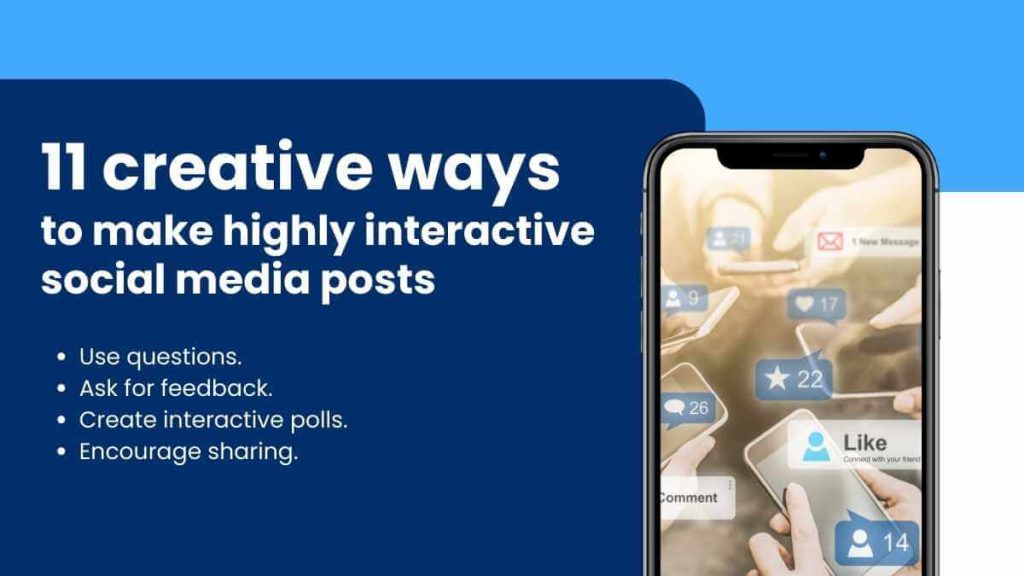Did you know that 45% of social media marketers say their engagement rates are declining, despite posting more content than ever?
It’s frustrating to pour hours into social media posts only to hear crickets. But here’s the thing: the most successful brands aren’t just posting more – they’re posting smarter. While some struggle to get likes and comments, others consistently spark conversations that turn followers into fans.
Learning how to build a successful social media strategy isn’t just about picking the right hashtags or posting at optimal times. It’s about understanding what makes your audience tick and creating content that genuinely resonates with them.
Whether you’re starting from scratch or revamping your existing approach, this guide will show you how to build a successful social media strategy that drives real engagement. From psychology-backed techniques to platform-specific tactics, we’ll cover everything you need to transform your social media presence.
Ready to turn those silent scrolls into meaningful interactions? Let’s dive in.

Understanding Social Media Engagement Psychology
Understanding the psychology behind social media engagement is crucial when learning how to create a social media strategy that truly resonates. Recent studies show that social media affects different brain functions in unique ways, triggering responses that can make or break your engagement efforts. So, how to build a successful Social Media Strategy? Let’s understand in detail with social media stats and facts.
Key Psychological Triggers That Drive Engagement
The human brain processes social media interactions through several key psychological triggers that drive engagement:
- Social Validation: When users receive likes or comments, their brains release dopamine, creating a reward system that encourages further interaction
- Fear of Missing Out (FOMO): Creates urgency and motivates quick engagement
- Reciprocity: Users feel compelled to return engagement when brands interact with them
- Social Proof: People look to others’ actions to determine appropriate behaviour
- Identity Association: Users engage with content that aligns with their values
How Different Audiences Engage Across Platforms?
Different demographics show distinct patterns in how they use and engage across social platforms. For instance, 37.3% of TikTok users are between 18-24 years old, while Facebook sees higher engagement from users aged 30-49 for news and community content.
Platform engagement varies significantly by age group:
| Age Group | Primary Platform | Main Engagement Type |
| 18-24 | Image-led platforms | Visual content, short-form video |
| 30-49 | Facebook, LinkedIn | News, professional content |
| 50+ | Community discussions |
Building Emotional Connections Through Content
Creating emotional connections is vital for sustained engagement. Research shows that 95% of purchasing decisions are made subconsciously, driven by emotional responses. To build these connections:
- Focus on high-arousal emotions like awe, excitement, and amusement
- Share true stories and facts that resonate with your audience’s values and emotions
- Use visual content strategically – humans process visual information 60,000 times faster than text
When building a successful social media strategy, remember that emotional content performs nearly twice as well as purely rational content. By understanding these psychological principles, you can create content that naturally encourages engagement and builds lasting connections with your audience.
What is the 50/30/20 rule for social media?
The 50/30/20 rule for social media is a guideline for balancing the types of content you post to engage and build a following effectively. It helps ensure your content strategy is varied and appeals to different aspects of your audience’s interests and needs. The rule divides your content into three categories:
- 50% Educational/Value-Based Content: This is the majority of your posts and focuses on providing useful information to your audience. It could include tips, how-to guides, industry insights, or anything that helps your audience learn something new or solve a problem.
- 30% Inspirational/Entertaining Content: This content should aim to inspire, entertain, or evoke emotions in your audience. It could include motivational quotes, behind-the-scenes glimpses, personal stories, or lighter, fun content that keeps your audience engaged and builds a connection.
- 20% Promotional Content: This portion of your posts should be directly related to promoting your products, services, or brand. It includes sales announcements, new product launches, or special offers. The idea is to ensure this is not too overwhelming or sales-heavy, maintaining a balance with other types of content.
By following the 50/30/20 rule, you can keep your social media presence balanced, ensuring that you provide value, engage your audience, and promote your brand effectively without overwhelming them with too much promotional material.
Crafting Content That Sparks Conversations
Creating meaningful conversations on social media requires more than just posting regular updates. The key lies in crafting content that naturally encourages dialogue and engagement. Let’s explore proven strategies to spark discussions that keep your audience coming back for more.
Creating Dialogue-Driven Posts
The most engaging social media content invites participation. According to recent data, posts that ask questions receive 2x more engagement than standard promotional content. Here are key tactics for creating dialogue-driven posts:
- Host Q&A or “Ask Me Anything” sessions
- Create polls and surveys about industry trends
- Share behind-the-scenes content that prompts questions
- Post-thought-provoking industry insights
- Ask creative questions that showcase audience expertise
Using Storytelling to Boost Engagement
How to build a successful Social Media Strategy with storytelling? Stories are the currency of social media engagement. When learning how to create a social media strategy, remember that emotional stories increase content memorability by 22%. To effectively use storytelling:
- Share authentic behind-the-scenes glimpses
- Highlight customer success stories
- Document your brand’s journey and milestones
- Create recurring characters or themes in your content
Leveraging User-Generated Content Effectively
User-generated content (UGC) is 9.8 times better than influencer content when making purchasing decisions. 93% of marketers agree that consumers trust content created by customers more than brand-created content.
How to build a successful social media strategy and how to positively leverage UGC in your social media strategy:
Start by actively prompting customers to share their experiences. Create branded hashtags and keep reminding followers to use them. For example, Urban Outfitters successfully uses #UOCommunity to gather authentic customer content.
Consider implementing a rewards system for sharing. While some brands naturally attract UGC, others find success through incentivization. Create exclusive opportunities for loyal customers to share their experiences and reward them for their participation.
Remember to integrate UGC across multiple channels. Don’t limit yourself to simple reposts – use customer content in your ads, website galleries, and email campaigns to maximise its impact and build trust with potential customers.
Platform-Specific Engagement Tactics
Each social media platform has its unique DNA when it comes to engagement. To build a successful social media strategy, you need to tailor your approach to match each platform’s distinct characteristics, user behaviours, and leverage the right social media software to optimise your efforts.
Instagram Story Engagement Techniques
With over 500 million people posting Stories daily, Instagram Stories have become a powerhouse for brand engagement. Here are the most effective techniques to boost Story engagement:
- Create Interactive Elements
- Use polls and quizzes for instant feedback
- Add question stickers for Q&A sessions
- Include countdown stickers for events
- Implement “slider” stickers for ratings
Behind-the-scenes content generates 36% more engagement than standard posts. Share authentic moments, team activities, and product development processes to humanize your brand and encourage responses.
Twitter Conversation Starters
Twitter thrives on real-time conversations, with 56% of users utilizing the platform for news and current affairs. To spark meaningful discussions:
- Monitor trending topics and contribute relevant insights
- Ask thought-provoking questions about industry trends
- Share breaking news with your unique perspective
- Time your posts during peak engagement hours
- Use relevant hashtags strategically
Remember that Twitter is more about “look at this” rather than “look at me.” Focus on sharing valuable insights and joining existing conversations rather than purely promotional content.
Facebook Group Engagement Strategies
Facebook Groups offer unprecedented opportunities for community building and engagement. Groups with clear guidelines and regular activities see up to 1300% higher engagement rates.
To maximize group engagement:
- Welcome new members personally and encourage introductions
- Create themed days for specific types of content
- Host regular “Ask Me Anything” sessions
- Recognize and reward active contributors
- Use polls to gather feedback and spark discussions
The key to success is consistency and value-first approach. Regular posting schedules combined with meaningful content create a thriving community environment. Consider implementing badges for top contributors and creating exclusive opportunities for member participation.
Remember to track engagement metrics across all platforms using native analytics tools. This data-driven approach helps refine your strategy and improve results over time.
Building an Engaged Community
Building a thriving social media community requires more than just collecting followers—it’s about creating a space where meaningful connections flourish. Recent studies show that 80% of social media users have purchased products in response to community interactions, highlighting the power of engaged communities.
Community Management Best Practices
Creating a successful social media strategy starts with establishing strong community management foundations. The most effective communities share these key characteristics:
- Clear guidelines and expectations
- Consistent brand voice across all interactions
- Regular, meaningful engagement with members
- Recognition of active contributors
- The balance between promotional and value-driven content
- Swift response times to queries and concerns
Remember that 76% of consumers notice and appreciate when businesses prioritize customer support in their communities. Maintaining an authentic, consistent presence helps build trust and encourages long-term loyalty.
Fostering User Interactions
The strength of your community lies in the connections between members, not just their connection to your brand. To create a welcoming, engaged environment, focus on facilitating meaningful interactions. Consider implementing an “80/20 rule”—where 80% of content caters to community interests, while only 20% promotes your business directly.
Creating opportunities for member-to-member engagement can include:
- Weekly discussion threads
- Member Spotlight features
- Collaborative challenges
- Expert Q&A sessions
- Community awards programs
Managing Engagement Crisis Situations
Even the most well-managed communities can face challenging situations. When learning how to create a social media strategy, it’s crucial to prepare for potential crises. 71% of users expect brands to respond within an hour during crisis situations.
The key to successful crisis management lies in swift, transparent action:
- Acknowledge the issue promptly
- Take conversations offline when appropriate
- Document all interactions
- Maintain consistent messaging across platforms
- Follow up to ensure resolution
- Learn from each situation to improve protocols
Remember that every crisis presents an opportunity to demonstrate your commitment to community well-being. By handling difficult situations with grace and transparency, you can often strengthen community bonds and build deeper trust with your audience.
Measuring and Optimizing Engagement
Success in social media isn’t about posting content only—it’s about measuring what works and what doesn’t. If you understand that, you understand half the game. Recent data shows that 80% of social marketers say their primary strategy is to increase engagement across social channels, yet many struggle to measure their success effectively.
Key Engagement Metrics to Track
When learning how to create a social media strategy, understanding the right metrics is crucial. Here’s a comprehensive overview of essential engagement metrics:
| Metric Type | What to Measure | Why It Matters |
| Interaction | Likes, comments, shares | Shows content resonance |
| Reach | Impressions, audience growth | Indicates content visibility |
| Conversion | Click-through rates, leads | Demonstrates ROI |
| Community | Response rates, sentiment | Reflects relationship strength |
Remember that engagement rate calculation follows a simple formula: [Total engagements ÷ reach] × 100. This provides clarity on how well your content resonates with your target audience.
Using Analytics to Improve Content Strategy
Analytics should drive your strategy refinement process. Data shows that brands using analytics-driven strategies see 37% higher engagement rates. To build a successful social media strategy, focus on:
- Content Performance Analysis
- Track post-timing effectiveness
- Monitor content format success rates
- Analyze audience demographic responses
- Measure hashtag performance
- Audience Behaviour Insights
- Peak engagement times
- Content preference patterns
- Platform-specific engagement trends
- Geographic response variations
A/B Testing for Better Engagement
A/B testing is crucial for optimizing your social media performance. This systematic approach helps identify what truly resonates with your audience. Essential elements to test include:
- Post Headlines and Copy
- Visual Content Types
- Posting Times
- Call-to-Action Phrases
- Content Formats
When conducting A/B tests, maintain consistency by changing only one variable at a time. Research indicates that brands implementing regular A/B testing see a 28% increase in engagement rates. Track your tests over sufficient periods (typically one-week minimum) to gather statistically significant data.
Remember to use platform-specific analytics tools for deeper insights. Facebook’s Insights, Twitter Analytics, and Instagram’s Professional Dashboard offer valuable data about your audience’s behaviour and preferences. These insights help refine your content strategy and improve engagement over time.
For conversion tracking, implement social media pixels on your website. This allows you to measure the journey from social engagement to concrete business results, helping you calculate the true ROI of your social media efforts. Monitor metrics like click-through rates (CTR) and conversion rates to understand which content drives actual business results.
Conclusion
Social media success demands more than random posting – it requires a strategic approach built on understanding user psychology, creating engaging content, and building genuine connections. The most effective social media strategies combine platform-specific tactics with consistent community management and data-driven optimization.
Your social media strategy should adapt based on performance metrics and audience feedback. Regular analysis of engagement rates, content performance, and community health metrics will help refine your approach. Remember that successful engagement comes from authentic interactions, valuable content, and a deep understanding of your audience’s needs.
Start implementing these strategies step by step, focusing first on the platforms where your target audience spends the most time. Test different content types, measure results, and adjust your approach based on what works best for your specific audience. Success in social media takes time and dedication, but the rewards of an engaged, loyal community make it worth the effort.

13+ Yrs Experienced Career Counsellor & Skill Development Trainer | Educator | Digital & Content Strategist. Helping freshers and graduates make sound career choices through practical consultation. Guest faculty and Digital Marketing trainer working on building a skill development brand in Softspace Solutions. A passionate writer in core technical topics related to career growth.




